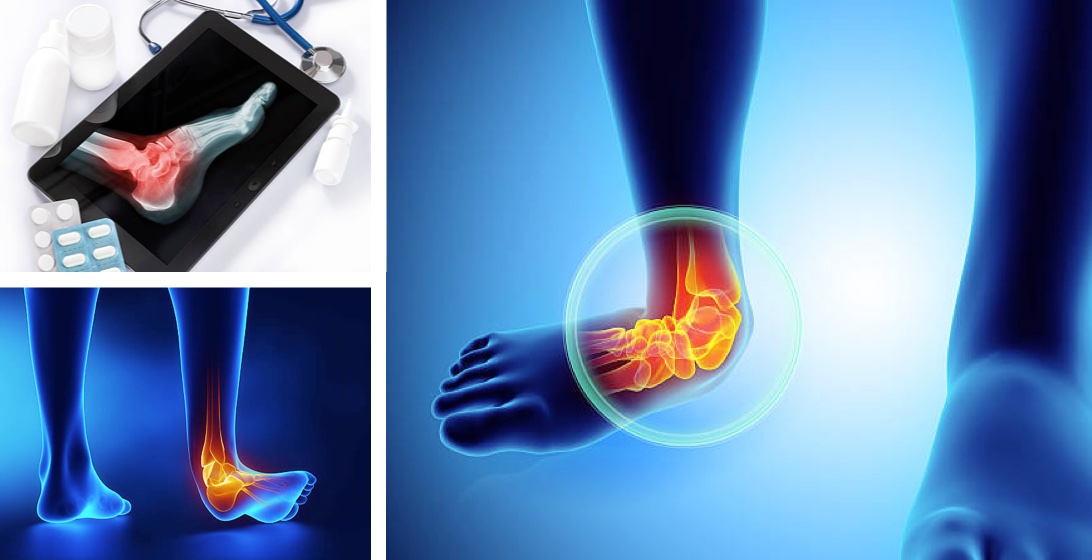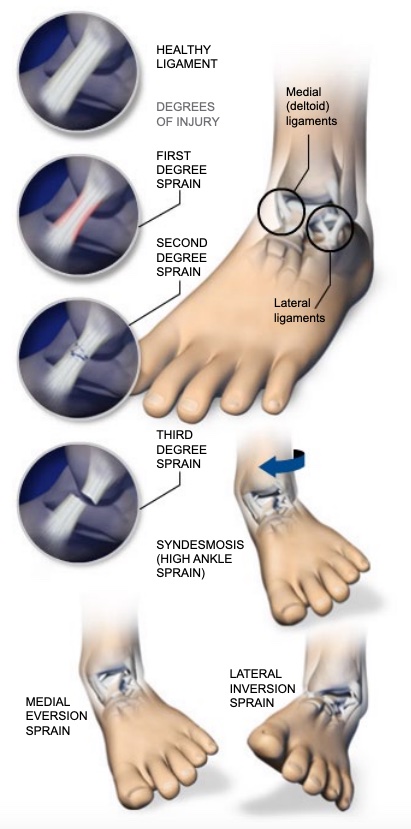Sprains can occur as a result of sudden twisting, turning or rolling movements.
Ligaments are fibrous, elastic bands of tissue that connect and stabilize the bones.
An ankle sprain is a common, painful injury that occurs when one or more of the ankle ligaments is stretched beyond the normal range of motion.

Sprains are ranked in three degrees
- A first-degree sprain is a slight stretching of one or more ligaments. This results in mild tenderness.
- A second-degree sprain is a partial tearing that results in moderate tenderness and swelling. The ankle may have some instability.
- A third-degree sprain, the most severe, is a complete ligament tear. This results in severe pain, swelling and ankle instability.
Ankle sprains are categorized by the type of motion that causes the injury
Lateral Inversion Sprains
The most common type, called a lateral inversion sprain, occurs when the foot rolls inward. This causes injury to the ligaments on the outer side of the ankle, especially the anterior talofibular ligament.
Medial Eversion Sprains
The second type of sprain called a medial eversion sprain, occurs when the foot rolls outward. This type of sprain causes injury to the ligaments on the inner side of the ankle.
Syndesmosis (High Ankle) Sprains
The least common type of sprain is called a syndesmosis (or “high ankle”) sprain. This type of sprain occurs when the foot rolls outward and the leg turns inward.
Treatment
Treatment for an ankle sprain depends on the severity of the injury. Treatment usually begins with rest, ice, compression and elevation. A first-degree sprain typically requires a bandage wrap. A second-degree sprain may require an ankle brace. A third-degree sprain may require a cast or walking boot. As the ankle heals, all patients typically benefit from rehabilitation exercises. Surgery is not usually needed.



